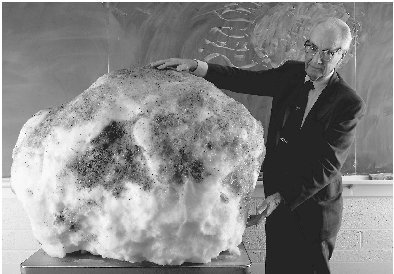Reward54 wrote:The text with the picture says the green color is from energized carbon and provides a hyperlink to Diatomic Carbon at Wikipedia. Wikipedia states that diatomic carbon is "..a gas that only exists above 3,642 °C."
I always think of the vacuum of space as cold, very cold. Comets are commonly characterized as "dirty snowballs," which also makes me think "very cold."
A vacuum can't really be hot or cold. In space, heat is transferred by radiation only. A rock in space near Earth's orbit might have a similar temperature to a rock in your backyard, both being heated by the Sun. It's actually a bit more complicated, because the final temperature depends on the balance between heat absorbed and heat radiated, but to a first order you can look at temperature this way. Comets are cold because they spend most of their time very far from the Sun, so they radiate more heat than they absorb. They are also pretty good thermal insulators, so their interiors don't heat up much when they are in the part of their orbit closest to the Sun. The surface boils or sublimates away, and the outer few meters heats up.
Could someone help me understand the presence of a glowing cloud of diatomic carbon gas of 3,000+ °C surrounding a cold dirty snowball? Is this due to the solar wind?
Yes, and to exposure to solar radiation to a lesser extent. Temperature is a measure of the energy that individual particles have, and the particles and molecules ejected from the comet can easily be energized when hit by charged particles or high energy photons. One way that energy can be measured is in terms of the equivalent heat that would be required. It's common for particles in space to have high speeds, and therefore high temperatures.
Where the ISS orbits is a region of Earth's upper atmosphere called the thermosphere. The particle temperature there is around 2500° C. Obviously, the ISS doesn't melt! And that's because it's nearly a vacuum. There simply aren't enough particles to transfer enough energy to the ISS surface to heat it significantly.
Temperatures in some nebulas can reach millions of degrees, even though their actual particle density qualifies them as hard vacuums.
 Comet 45P Passes Near the Earth
Comet 45P Passes Near the Earth



